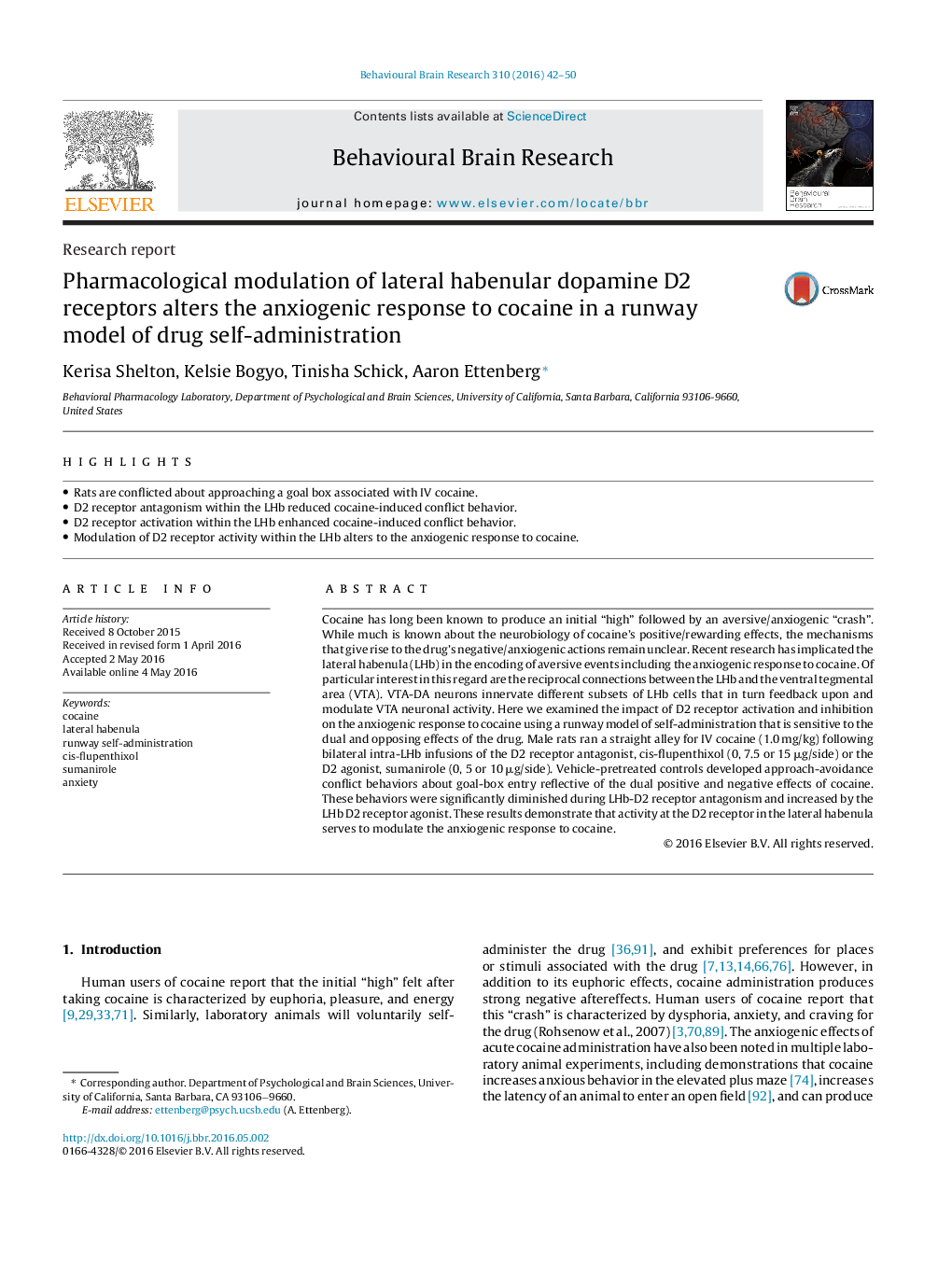| Article ID | Journal | Published Year | Pages | File Type |
|---|---|---|---|---|
| 4312129 | Behavioural Brain Research | 2016 | 9 Pages |
•Rats are conflicted about approaching a goal box associated with IV cocaine.•D2 receptor antagonism within the LHb reduced cocaine-induced conflict behavior.•D2 receptor activation within the LHb enhanced cocaine-induced conflict behavior.•Modulation of D2 receptor activity within the LHb alters to the anxiogenic response to cocaine.
Cocaine has long been known to produce an initial “high” followed by an aversive/anxiogenic “crash”. While much is known about the neurobiology of cocaine’s positive/rewarding effects, the mechanisms that give rise to the drug’s negative/anxiogenic actions remain unclear. Recent research has implicated the lateral habenula (LHb) in the encoding of aversive events including the anxiogenic response to cocaine. Of particular interest in this regard are the reciprocal connections between the LHb and the ventral tegmental area (VTA). VTA-DA neurons innervate different subsets of LHb cells that in turn feedback upon and modulate VTA neuronal activity. Here we examined the impact of D2 receptor activation and inhibition on the anxiogenic response to cocaine using a runway model of self-administration that is sensitive to the dual and opposing effects of the drug. Male rats ran a straight alley for IV cocaine (1.0 mg/kg) following bilateral intra-LHb infusions of the D2 receptor antagonist, cis-flupenthixol (0, 7.5 or 15 μg/side) or the D2 agonist, sumanirole (0, 5 or 10 μg/side). Vehicle-pretreated controls developed approach-avoidance conflict behaviors about goal-box entry reflective of the dual positive and negative effects of cocaine. These behaviors were significantly diminished during LHb-D2 receptor antagonism and increased by the LHb D2 receptor agonist. These results demonstrate that activity at the D2 receptor in the lateral habenula serves to modulate the anxiogenic response to cocaine.
